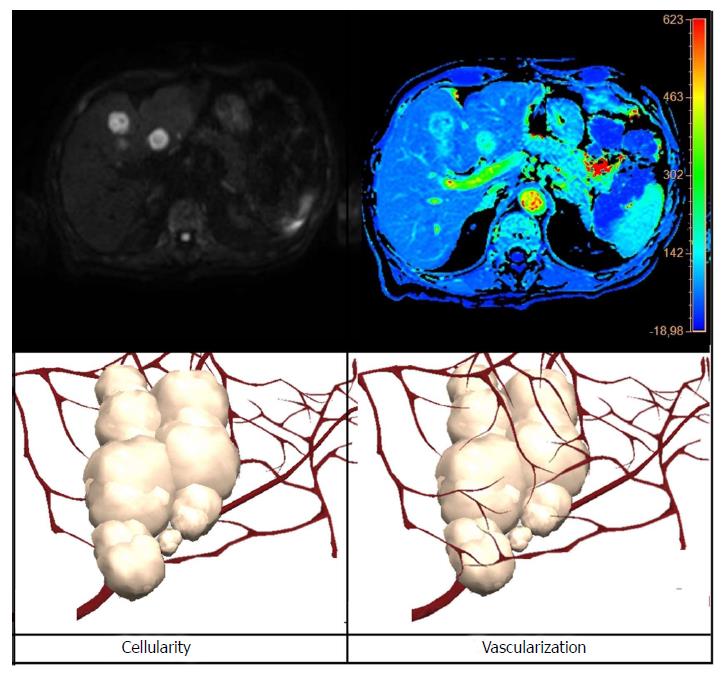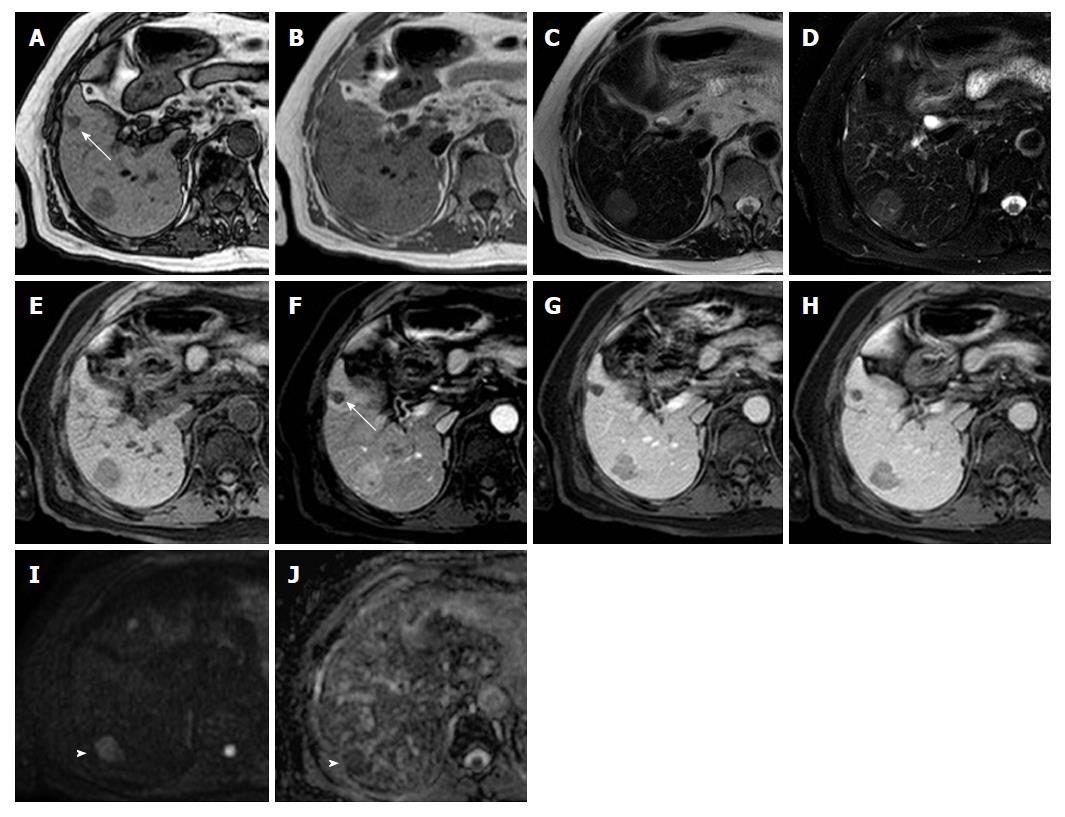Copyright
©The Author(s) 2018.
World J Gastroenterol. Jun 21, 2018; 24(23): 2413-2426
Published online Jun 21, 2018. doi: 10.3748/wjg.v24.i23.2413
Published online Jun 21, 2018. doi: 10.3748/wjg.v24.i23.2413
Figure 1 Schematic comparison between diffusion weighted images (on the left) and perfusion maps (on the right) showing the meaning from the pathophysiological point of view of the two different functional magnetic resonance techniques.
The diffusion offers qualitative information strictly related to tissue cellularity, while perfusion sequences offer qualitative information about tissue vascularization.
Figure 2 Schematic representation showing dynamic contrast enhanced sequences, diffusion weighted images, and T2-weighted features in typical, green, and hypovascular hepatocellular carcinoma, comparing information from extracellular contrast agent and hepatobiliary contrast agent.
ECA: Extracellular contrast agent; HBA: Hepatobiliary contrast agent; DWI: Diffusion weighted images.
Figure 3 Gd-EOB-DTPA enhanced magnetic resonance images of a 67-year-old male patient with large hepatocellular carcinoma lesion in the right liver lobe.
Panels A-B: T1-weighted sequences “in and out of phase” demonstrate a heterogeneous mass slightly hypointense without a signal drop in “out of phase” sequence. Panels C-D: T2-weighted image without and with fat saturation demonstrates a slightly hyperintense mass with a central, homogeneous hyperintense area, as per necrosis. Panels E-H: Dynamic contrast-enhanced images delineate the typical contrast behavior of hepatocellular carcinoma (HCC): Hyperenhancement during the arterial phase (F) followed by wash-out in portal and delayed phase (G-H). In the hepatobiliary phase image 20 min after Gd-EOB-DTPA injection the nodule appears highly hypointense compared with the surrounding enhanced liver (panel I). Panel J: On the diffusion weighted image, HCC lesion is hyperintense due to the restriction of water diffusion. Panel K-L: Perfusion images derived from semiquantitative analysis (relative arterial enhancement and maximum enhancement) the HCC is characterized by high vascularity intensity signals, shown as hot-spots signals.
Figure 4 Gd-EOB-DTPA enhanced magnetic resonance images of a 61-year-old patient with hepatocellular carcinoma nodule in the VII segment of the liver.
Panels A-B: A single nodule slightly hypointense on the T1-weighted “in phase” sequence (A) with a signal drop in the “out of phase” sequence, as per fat deposition. Panels C-D: On T2-weighted image without and with fat saturation the nodule appears slightly hyperintense. Panels E-H: Dynamic contrast-enhanced images demonstrate the typical contrast behavior of hepatocellular carcinoma: Which appear hypervascular during the arterial phase (F) with wash-out in portal and delayed phase (G-H). Panel I-J: Diffusion weighted image (DWI) shows the hyperintense pattern of the lesion which appear hypointense on the relative apparent diffusion coefficient map (arrowhead). Previously treated lesion with transarterial chemoembolization is recognizable, in panel A-E-F-G-H, at V segment of the liver (arrow). No any restriction of signal intensity is evident on DWI (panel I-J).
- Citation: Ippolito D, Inchingolo R, Grazioli L, Drago SG, Nardella M, Gatti M, Faletti R. Recent advances in non-invasive magnetic resonance imaging assessment of hepatocellular carcinoma. World J Gastroenterol 2018; 24(23): 2413-2426
- URL: https://www.wjgnet.com/1007-9327/full/v24/i23/2413.htm
- DOI: https://dx.doi.org/10.3748/wjg.v24.i23.2413












